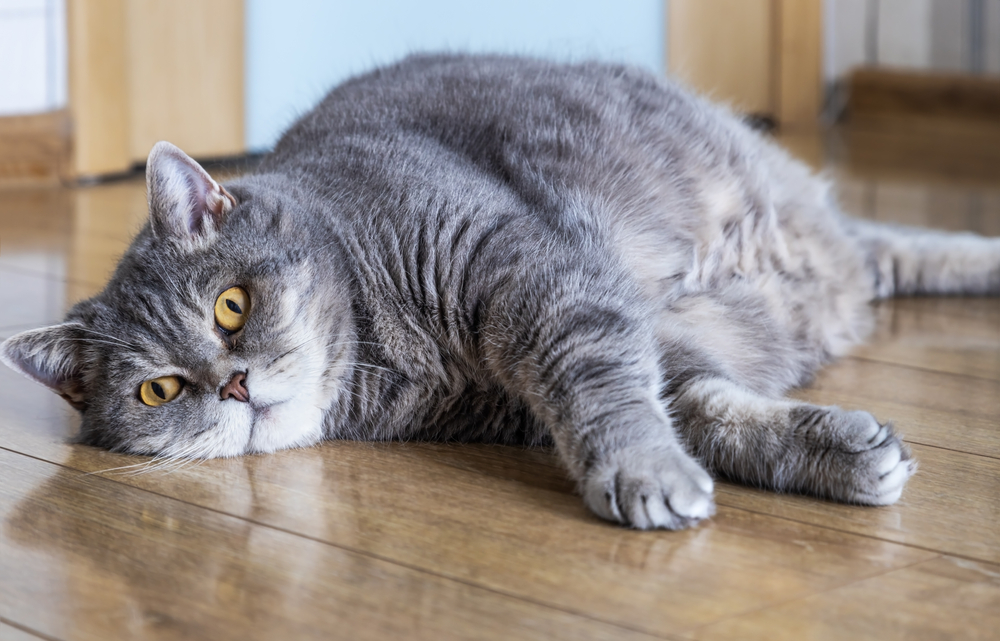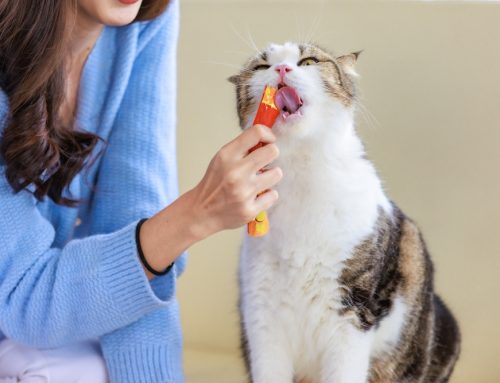Scroll your social media for a few minutes, and you no doubt will stumble on an adorable pudgy pet with endless rolls and a giggle-inducing waddle. However, once you understand the myriad of health consequences that can affect overweight pets, you may not find these posts so entertaining. Determining your pet’s ideal weight is essential, but can be challenging. Our team at Neighborhood Veterinary Centers of Calder answers important questions about pet obesity and weight management.
Question: Why does my pet’s weight matter?
Answer: Your pet’s weight hugely impacts their quality and quantity of life. Obese pets face a shorter life expectancy and an overall reduced quality of life. Excess weight increases your pet’s risk for many dangerous health issues, including:
- Arthritis — Extra weight puts added pressure on a pet’s joints, leading to joint cartilage deterioration and arthritis over time.
- Cancer — Excess fat cells produce a chronic, low-grade inflammation throughout the body, as well as higher than normal levels of certain hormones that can lead to cancer.
- Diabetes — Like humans, obese pets are at a greater risk for Type II diabetes, which occurs when the body can’t use glucose normally. A diabetic pet requires frequent veterinary visits, a specific diet, and daily insulin injections.
- Respiratory diseases — Pet obesity can cause potentially life-threatening breathing issues, such as a collapsing trachea and laryngeal paralysis.
- Chronic kidney disease — High blood pressure damages kidney tissue, resulting in chronic kidney disease.
- Heart disease — Overweight pets are prone to high blood pressure, which can cause arterial damage and lead to stroke, retinal detachment, kidney failure, or congestive heart failure.
Q: How do I know if my pet is considered overweight?
A: Many owners do not realize—or won’t admit— that their pet is overweight. A pet is considered overweight if they weigh more than 10% above their ideal weight, and obese if their weight exceeds 30% of their ideal weight. To best assess your pet’s weight status, ask our veterinary professionals, who will calculate your pet’s weight using a body condition scoring (BCS) system, which rates pets on a scale of either 1 to 5 or 1 to 9. Our veterinarians assign a BCS score after assessing various factors that include your pet’s muscle condition, waist size and shape, and the degree of fat covering their ribs.
If you are concerned about your pet, ask your veterinarian to evaluate your pet’s BCS, so you can better understand your pet’s weight, and to help you set reasonable weight loss goals if your pet’s body condition is less than ideal. Our Neighborhood Veterinary Centers of Calder team can evaluate your pet’s health, develop a personalized weight loss plan for your pet, and help you monitor their progress.
Q: How can I help my pet lose or maintain weight?

A: If your pet needs to shed some pounds, you must follow your veterinarian’s customized, healthy weight-loss plan that will likely require lifestyle changes, balanced calorie consumption, close monitoring, and physical activity. Your pet’s weight-loss program will involve the following:
- Ruling out health issues — Certain health conditions, such as hypothyroidism and Cushing’s disease, can lead to weight gain in pets. Before you institute a weight-loss plan, your veterinarian should check your pet to ensure their weight gain is not caused by a medical condition and, if necessary, prescribe medication to manage the condition.
- Changing your pet’s diet — Once you know your pet’s ideal weight and their weight-loss goal, you need to determine your pet’s daily calorie requirements for maintaining a healthy body weight. You can calculate the calories they need with calculators for cats or dogs. Once you determine your pet’s correct portion size, use a measuring cup to ensure you feed them the precise amount of food they need, rather than guessing the amount.
- Reduce your pet’s treats — Keep your pet’s treats to a minimum—treats should make up no more than 10% of your pet’s total diet—and include them in your pet’s daily caloric intake. Instead of high-calorie treats with little nutritional value, feed your pet steamed or raw vegetables, such as celery, carrots, green beans, and broccoli.
- Exercise your pet daily — In addition to a healthy, portioned diet, your pet needs daily exercise to maintain an ideal body weight—ideally 10 to 15 minutes of physical exercise twice per day. If your pet is not used to exercising, start slowly, and gradually increase the activity level and duration.
- Monitor your pet’s weight — Weigh your pet frequently on a scale to identify any weight fluctuations, regularly evaluate their BCS score, and reach out to your veterinarian with any concerns.
Pet owners, with the help of their veterinary team, are responsible for making good choices about their pets’ diet and exercise and keeping pets at their ideal weight to help ensure they live a long, happy, and healthy life. If you have any questions or concerns about your pet’s weight, contact our team at Neighborhood Veterinary Centers of Calder.






Leave A Comment